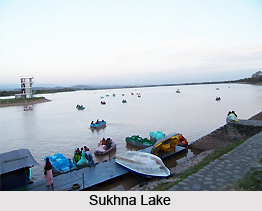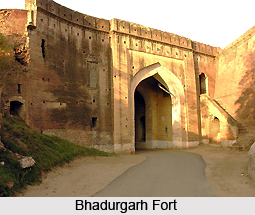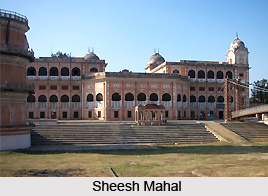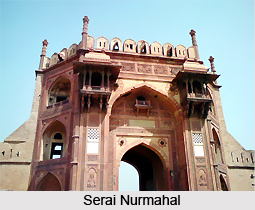 Chandigarh, the state capital, is often referred to as Le Corbusier`s City. It is beautifully located below the Shiwalik range of hills. Two hill torrents were canalized to form a large lake with a most attractive boulevard, along which the citizens take the morning and evening air and watch waterfowl which have made Sukhna Lake a halting place on their migrations from Central Asia to India and vice versa.
Chandigarh, the state capital, is often referred to as Le Corbusier`s City. It is beautifully located below the Shiwalik range of hills. Two hill torrents were canalized to form a large lake with a most attractive boulevard, along which the citizens take the morning and evening air and watch waterfowl which have made Sukhna Lake a halting place on their migrations from Central Asia to India and vice versa.
The layout of the city was designed by the famous French architect, Le Corbusier. He designed most of its important public buildings, including the Secretariat, the Legislative Assembly and the High Court. Many of these buildings are on stilts, an architectural style copied by many private institutions and homes.
An ancient Indus Valley settlement was found near Ropar, which was also the meeting place of Punjab`s legendary Maharaja Ranjit Singh and Lord William Bentick on October 31, 1831. Here the remnants of Alexander`s Army were discovered. There other archaeological sites as well.

Dholbaha, the ancient temple town at Hoshiarpur dates back to Pleistocene period of stone age. It also shows the continuous development of man from 7th and 8th century A.D. the relics from this site have been placed in the city museum of Hoshiarpur.
Sanghol in the Fatehgarh Sahib district belongs to the Harappan culture. Excavations have led to the discovery of a Buddhist monastery and a stupa dating back to the Kushan Empire.
Another not to be missed fort in Punjab is the Bathinda Fort. as one witnesses the fort he or she will realize that the fort is sailing vessel shaped and it stands like one on a vast sea beach. This fort is considered to be 1800 years old and the founder is believed Bhatti Reo. It was taken over by Maharaja Ala Singh of Patiala in the year 1754. a small gurudwara lies nearby. It is important as Guru Gobind Singh visited this place. in fact it was built to commemorate his visit.
Faridkot Fort is situated at a distance of 390 kilometers from Ferozepur. This fort houses the Sheesh Mahal, a concept that had been widely used in Rajasthan forts and palaces. It is believed that the fort spins a history of 700 years within its secure walls.
The state houses some interesting forts. these historical buildings will also help the tourists to comprehend the rigorous past of Punjab. Foremost of these is the Govindgarh Fort in Amritsar. It belonged to Maharaja Ranjit Singh. However, nowadays, it is under the control of the paramilitary forces and hence is not open for visitors.
From Patiala the tourists can drop in at the Bhadurgarh Fort. it was actually founded by Nawab Saif Khan in 1658. However Maharaja Karam Singh, Patiala in 1837, built it. Occupying an area of 2100 sq meters it is surrounded by a moat and its two circular battlements arte worth checking out. The well-designed citadel is presently under the supervision of the police department.
 Shahpur Kandi Fort near Pathankot, Qila Mubarak in Patiala, Phillaur Fort in Ludhiana and Anandpur Sahib Fort in Ropar are the other forts that can be explored by the travelers.
Shahpur Kandi Fort near Pathankot, Qila Mubarak in Patiala, Phillaur Fort in Ludhiana and Anandpur Sahib Fort in Ropar are the other forts that can be explored by the travelers.
Punjab had been under majestic rule for a long period of time. During this time the kings had built beautiful palaces for themselves. Today these royal houses serve as tourist attractions for the travelers. The Summer Palace of Maharaja Ranjit Singh issituated in Punjab. The entrance gate is known as Darshani Deori. With 4 stories tower in the cardinal directions it has a unique entrance. Its sprawling garden is spread on 84 acres of land. It has rare plants, trees and flowers.
Qila Mubarak in Patiala was the royal residence of the Patiala dynasty. The other structures that are worth checking out within these palace are the Sheesh Mahal, Jail Walla Palace, Moti Mahal, Palace of Colours, Putli Ghar, Rajmata Mahal, Bagh Ghar and others. but the most striking palace within this structure is the one that had been connected with the underground sewerage system and houses a cool room attached with a tunnel that brings cool breeze to the room.
Sheesh Mahal, Patiala was built during the rule of Maharaja Narinder Singh (1845-1862). It is situated in the midst of a forest that has been endowed with nature`s bounty. An artificial lake has been connected to the Banasar Ghat. There is a hanging bridge at the Sheesh Mahal that will remind the onlookers of Lakhsman Jhula at Rishikesh. The walls of the mahal are adorned with portraits of Sikh Gurus and pictures that depict tales from Bhagwad Gita.
Apart from these there are other palaces in Punjab as well. while some are closed for visitors the others have been converted to army schools.
Other than these the state of Punjab is also ha several historical ruins. Aam Khas Bagh in Fatehgarh Sahib, Takhat-i-akbari, Kalanaur in Gurudaspur, Mausoleums of Ustad and Shagird, Nakodar in Jalandhar, Serai Nurmahal (near Jalandhar), Mughal Sarai at Shambhu in Patiala, Tomb of Mir-i-Miran in Sirhind, Sarai Amanat Khan in Amritsar, Sabraon War Memorial at Jalawala village in Ferozepur and Bhir in Ludhiana.
 Punjab can be easily hailed as the land of martyrs. Hence there are several places of interest that pay homage to the freedom fighters of India. Jallianwala Bagh Martyr`s Memorial in Amritsar has almost become a pilgrimage place. The Jallianwala Bagh Tragedy, 1919 shook the whole country at that point of time. Today it is a major tourist spot as tourists are interested to witness this tragic yet historic place.
Punjab can be easily hailed as the land of martyrs. Hence there are several places of interest that pay homage to the freedom fighters of India. Jallianwala Bagh Martyr`s Memorial in Amritsar has almost become a pilgrimage place. The Jallianwala Bagh Tragedy, 1919 shook the whole country at that point of time. Today it is a major tourist spot as tourists are interested to witness this tragic yet historic place.
In Ferozepur the travelers would come across memorials of revolutionaries, such as, Bhagat Singh, Sukhdev and Rajguru. Apart from these there is the Sargarhi Memorial at Ferozepur and Desh Bhagat Hall in Jalandhar.
The Wagah Border is one tourist place that sets Punjab completely apart from the rest of India. it is the India-Pak border that is opened to tourists at a particular time of the year. it is a great feeling to stand at that spot and witness the border.






